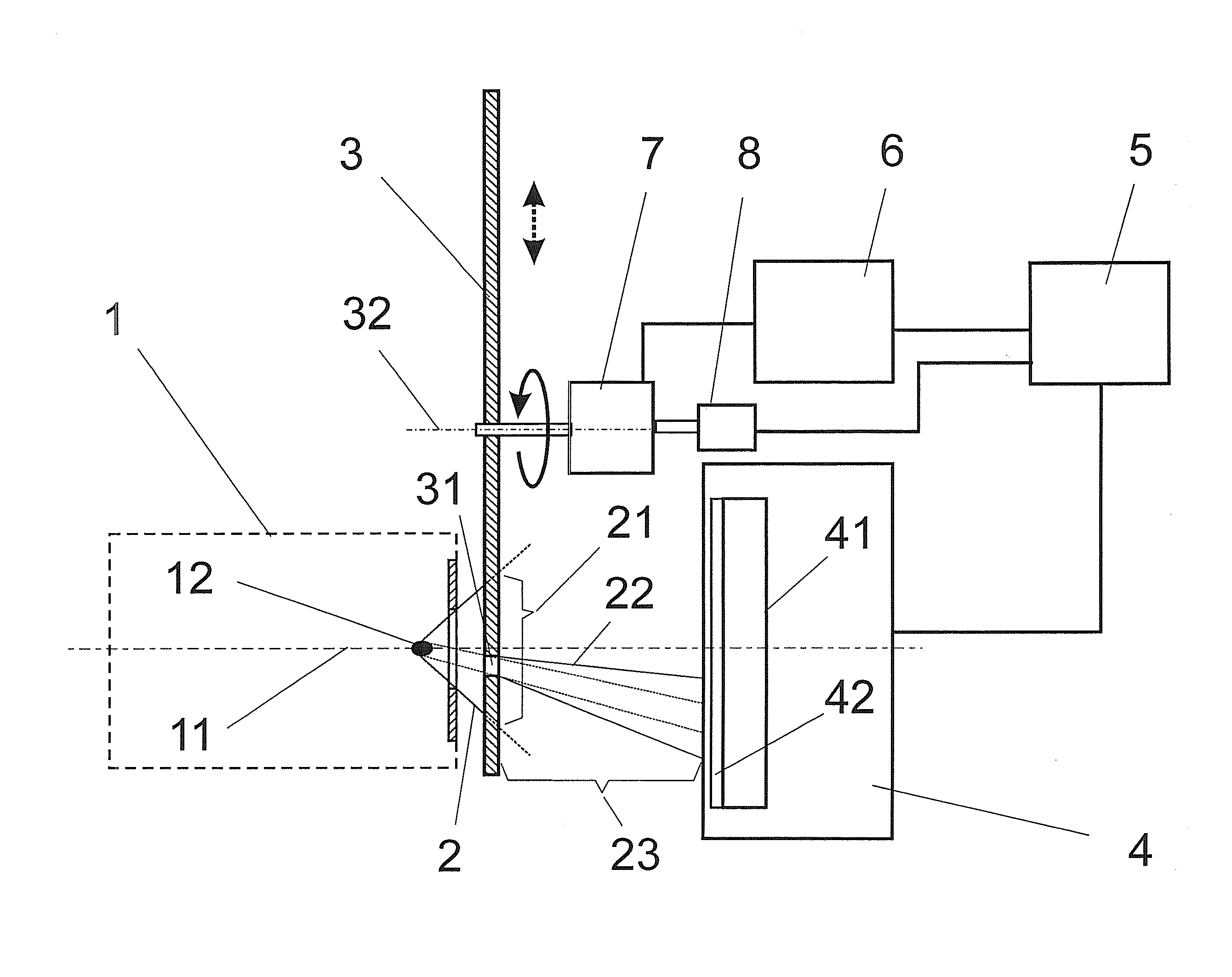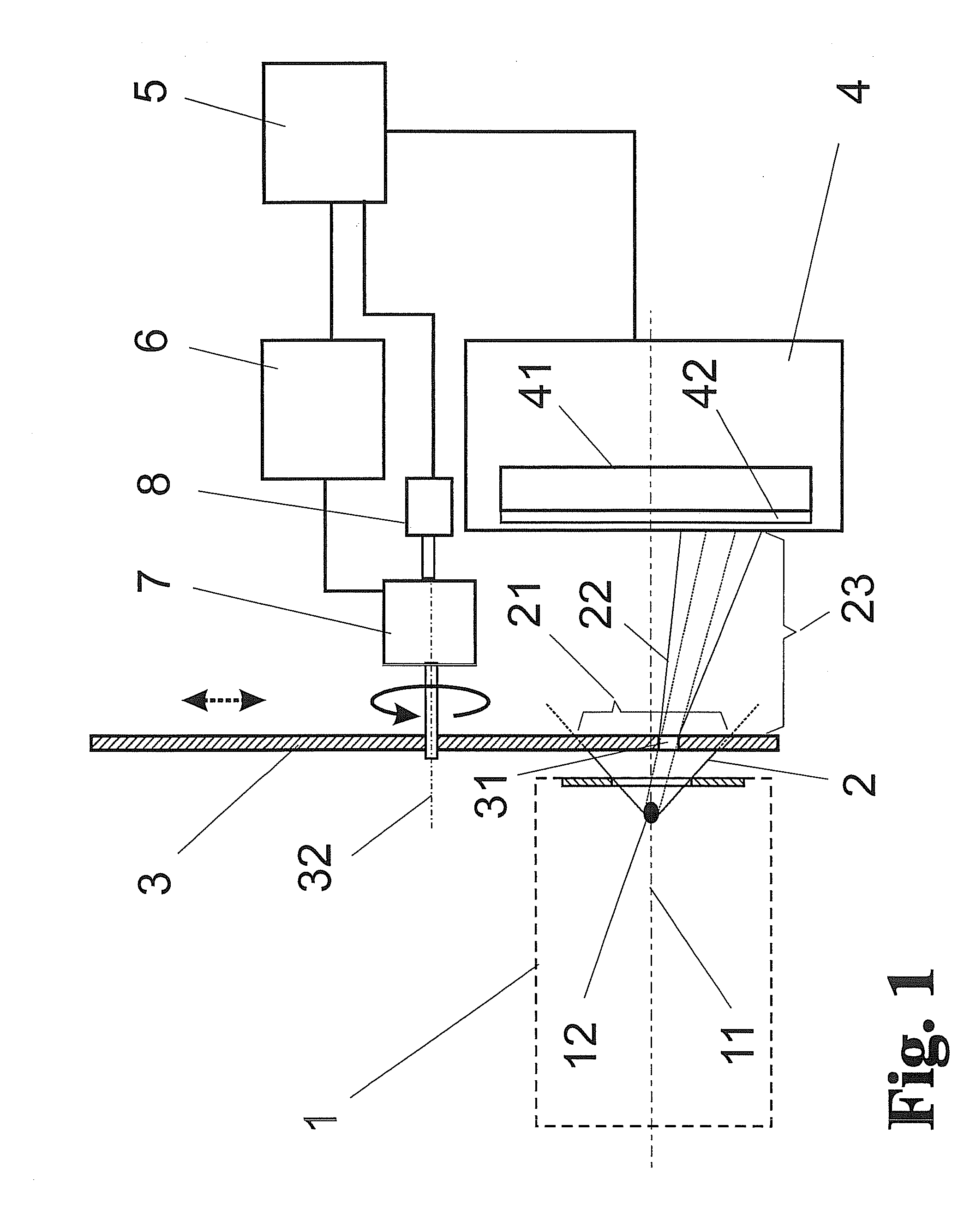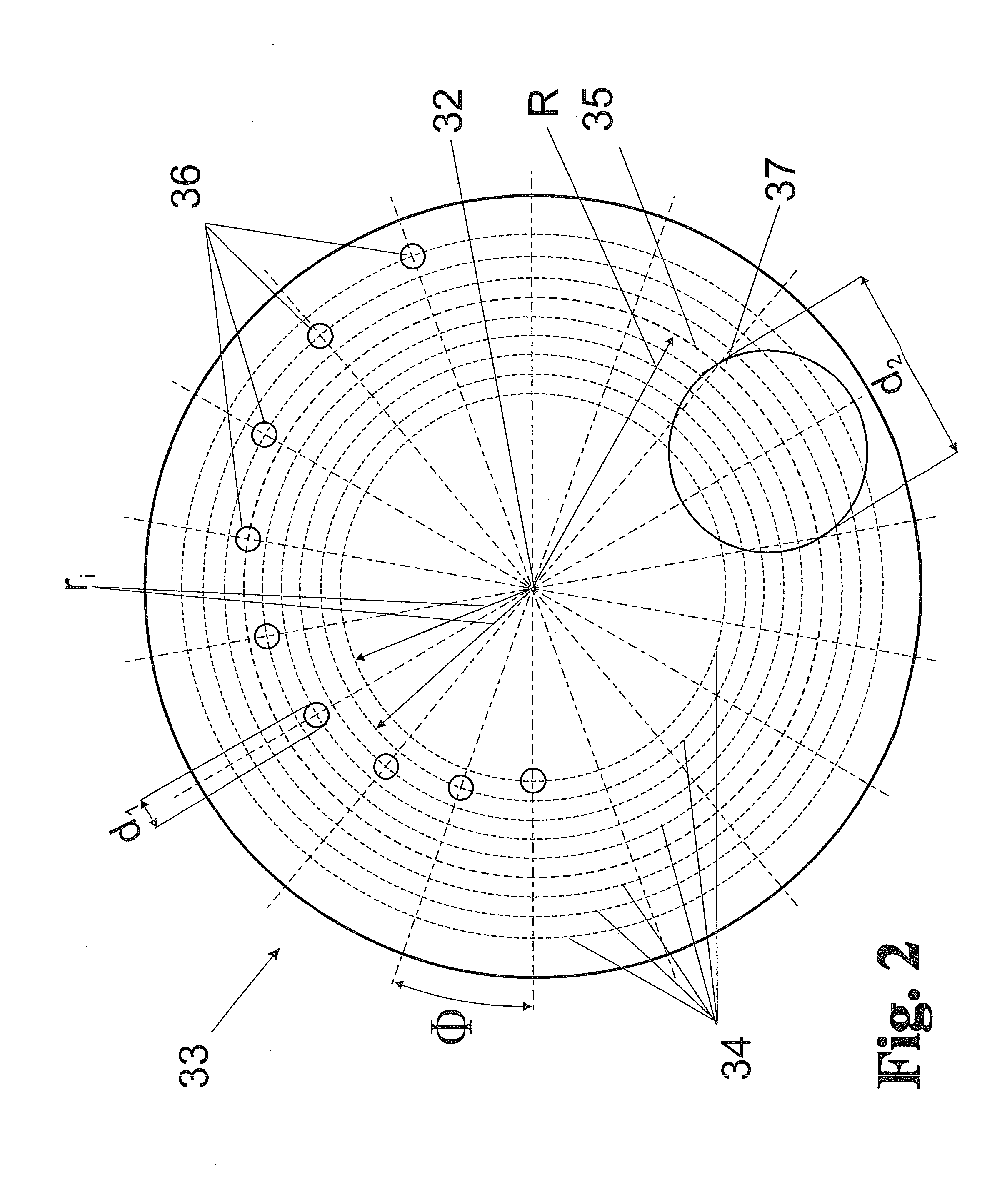Method for the Spatially Resolved Measurement of Parameters in a Cross Section of a Beam Bundle of High-Energy Radiation of High Intensity
- Summary
- Abstract
- Description
- Claims
- Application Information
AI Technical Summary
Benefits of technology
Problems solved by technology
Method used
Image
Examples
Embodiment Construction
[0057]The method will be described with reference to the schematic construction shown in FIG. 1.
[0058]In the present method, a spatially limited bundle of high-energy radiation which is emitted by a radiation source 1 and which has an intensity (beam bundle 2) is measured with respect to its radiation characteristics (e.g., a spatial intensity distribution) over the beam cross section.
[0059]Radiation is emitted by the radiation source 1 (e.g., an EUV radiation source with a 13.5-nm working wavelength) along an optical axis 11 as a beam bundle 2 in the form of a spatially limited radiation cone, assumed for the sake of simplicity, which is possibly also focused through a collector 15 (shown only in FIG. 4) and is available for a measurement of beam parameters in its cross section 21.
[0060]A shading element 3 is positioned in the beam bundle 2 following a source location 12 (the original or an optically conjugate source location) and is arranged in the immediate vicinity of the source...
PUM
 Login to View More
Login to View More Abstract
Description
Claims
Application Information
 Login to View More
Login to View More - R&D
- Intellectual Property
- Life Sciences
- Materials
- Tech Scout
- Unparalleled Data Quality
- Higher Quality Content
- 60% Fewer Hallucinations
Browse by: Latest US Patents, China's latest patents, Technical Efficacy Thesaurus, Application Domain, Technology Topic, Popular Technical Reports.
© 2025 PatSnap. All rights reserved.Legal|Privacy policy|Modern Slavery Act Transparency Statement|Sitemap|About US| Contact US: help@patsnap.com



